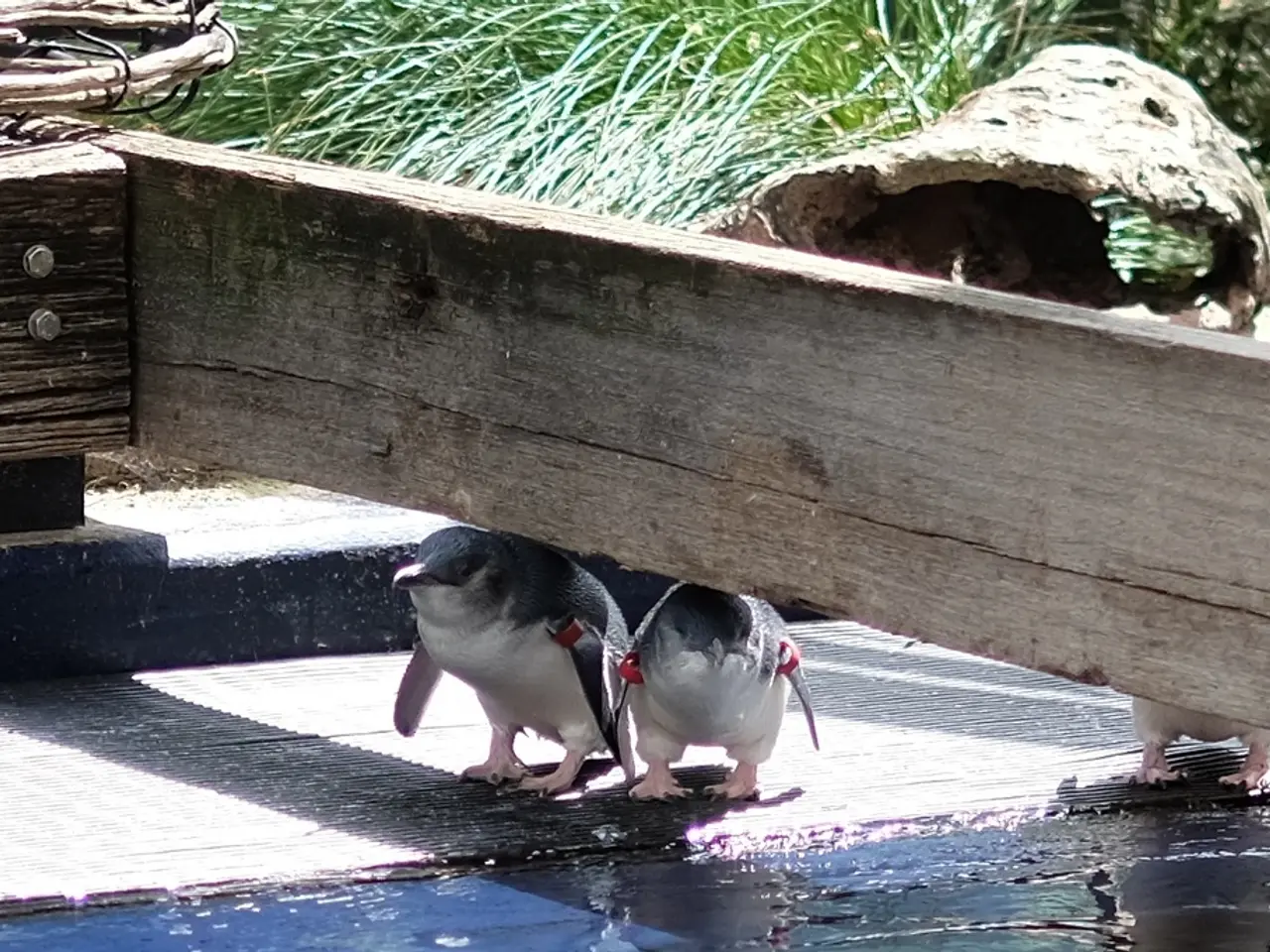Ancient Fossil Find Provides Crucial Insight into Penguin Evolutionary History
In a groundbreaking discovery, scientists have unearthed the fossil of a new species of penguin, Pakudyptes hakataramea, dating back approximately 24 million years. This minuscule penguin, standing at around 11.8 to 13.8 inches tall, was found in Hakataramea Quarry, South Canterbury, New Zealand in 1987.
The fossil's anatomy offers crucial insight into the evolution of penguin wings. The humerus and ulna, key bones in the wing, reveal where muscles and ligaments were attached, giving clues about how Pakudyptes used its wings for swimming.
One of the most significant aspects of Pakudyptes hakataramea is its size variation. Smaller than many other known fossil penguins, its small size suggests greater ecological diversity among ancient penguins than previously understood. This discovery challenges the traditional view that ancient penguins were mostly giant birds, indicating that they were experimenting with different body sizes and ecological niches during the Oligocene.
Pakudyptes hakataramea also provides valuable insights into penguin evolution and biogeography. Being from the Late Oligocene of New Zealand, it helps clarify how early penguins diversified and dispersed in the Southern Hemisphere. New Zealand is a crucial area for understanding penguin evolution due to its rich and diverse penguin fossils.
Moreover, the anatomical features of Pakudyptes show a mix of primitive and derived traits, serving as an important transitional form. Studying its morphology helps shed light on how modern penguin characteristics—such as flightlessness, swimming ability, and feeding adaptations—developed over time.
The Late Oligocene was a period of global cooling and environmental change. The existence of such a penguin in New Zealand during this time suggests that penguins were adapting to changing marine ecosystems and may have employed different survival strategies, aiding their long-term success.
The discovery of Pakudyptes hakataramea was published in the Journal of the Royal Society of New Zealand on August 1, 2024. The tiny penguin is named "Pakudyptes" because it was small and a diver, with the name derived from Māori and Greek.
Pakudyptes hakataramea is more than just a tiny penguin from the past; it represents a symbol of the incredible story of life on our planet. The story of Pakudyptes hakataramea highlights the rich evolutionary history that has shaped the world we live in today, offering valuable lessons about how life evolves and adapts to changing environments.
Esther Evangeline, an advocate for animal welfare with a Master's degree in Zoology and a postgraduate diploma in Animal Welfare, expressed her excitement about the discovery. "Pakudyptes hakataramea is a testament to the never-ending journey of scientific discovery and the continuous uncovering of new insights into the history of life on Earth," she said.
In conclusion, the discovery of Pakudyptes hakataramea enriches our understanding of early penguin diversity, evolution, and adaptation within a key paleogeographic region during an important climatic period. This tiny penguin serves as a reminder of the incredible story of life on Earth and the ongoing quest for knowledge and understanding.
- The discovery of Pakudyptes hakataramea offers significant contributions to research in paleontology, providing valuable insights into the evolution of penguins and their adaptability to changing environments during the Late Oligocene.
- The Pakudyptes hakataramea fossil's anatomy, particularly its small size and mix of primitive and derived traits, has sparked intrigue in the scientific community, fueling further research in data and cloud computing and technology to decipher its Role in penguin evolution.
- This unveiling of Pakudyptes hakataramea's existence challenges traditional views about the size and ecological diversity of ancient penguins, contributing to revisions in environmental-science textbooks that outline the life and adaptations of penguins during the Oligocene era.
- The implications of the Pakudyptes hakataramea discovery extend beyond penguin evolution, as this research serves as a stimulus for space-and-astronomy researchers to investigate how other life forms may have adapted to environmental changes on distant planets and stars, furthering our understanding of life's resilience and diversity throughout the universe.




